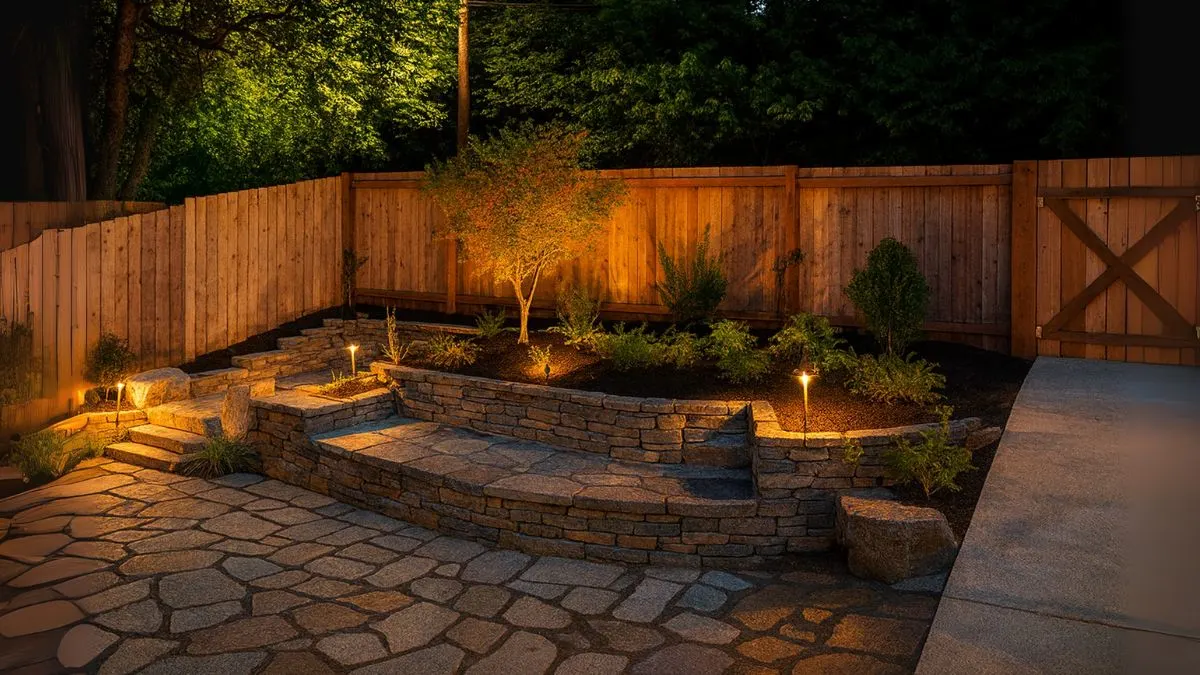Your backyard should be a place of relaxation, not a weekend chore list. Yet many homeowners struggle with lawns that demand constant mowing, watering, and fertilizing. The good news? With a few smart strategies, you can design a beautiful backyard that looks lush and welcoming but doesn’t consume all your free time. From xeriscaping to outdoor living areas, let’s explore how to create a yard that’s stunning, sustainable, and easy to maintain.
Step 1: Start with a Smart Layout

Any low-maintenance design begins with structure. Start with a smart layout that divides your backyard into functional zones: seating, greenery, walkways, and perhaps a play area. By doing this, you avoid random planting that can become hard to manage later.
Think of your backyard like an open floor plan—flow matters. Position shady seating near the house, a dining space by the grill, and resilient plants along the borders. A smart layout makes maintenance easier because everything has a clear place.
Step 2: Create Outdoor Living Areas
Instead of focusing on endless greenery, create outdoor living areas. A stone patio, wooden deck, or even a small firepit lounge transforms your backyard into an extension of your home. These areas not only reduce the space you need to maintain but also add more functionality.
In my own backyard makeover, replacing one-third of the lawn with a pergola-covered dining spot saved me hours of mowing and created a space where family gathers every evening.
Also Read: Viola Flowers: Tiny Blooms With Big Personality—And Easy Care!
Step 3: Opt for Gravel Over Grass
Lawns can be beautiful but are notorious for being high-maintenance. If you’re tired of mowing, watering, and fertilizing, opt for gravel. Gravel is durable, affordable, and adds a modern touch to your yard.
You can also install deep gravel paths instead of grassy walkways. These paths not only reduce the upkeep but also look stylish, especially when bordered with native plants. Gravel drains well, prevents muddy patches, and cuts down on weed growth if installed properly with a liner.
Step 4: Embrace Xeriscaping
Water bills and lawn care chemicals are rising costs many want to avoid. That’s where xeriscaping, selecting native plants, removing your grass and using artificial alternatives come in. Xeriscaping involves designing a landscape that thrives with minimal water.
- Replace thirsty lawns with drought-tolerant shrubs and groundcovers.
- Use mulch and stones to conserve soil moisture.
- Add a touch of artificial turf in smaller areas for a clean, evergreen look without maintenance.
Not only does xeriscaping save time, but it also makes your yard eco-friendly.
Step 5: Choose Native Plants
The secret weapon of any low-maintenance garden is to choose native plants. Unlike exotic species, native plants are already adapted to local weather, soil, and pests. That means less watering, less fertilizing, and fewer pest problems.
For example:
- In the USA, coneflowers and black-eyed Susans thrive with little attention.
- In Canada, hostas and serviceberries are resilient and beautiful.
- Globally, wherever you are, your native plants will always outlast imported ones.
Planting natives creates a sustainable ecosystem while adding natural beauty to your backyard.
Also Read: How to Grow and Style Your String of Pearls
Grass vs Gravel vs Native Plant Design
Feature |
Traditional Lawn |
Gravel/Native Plant Design |
Water Needs |
High (daily watering) |
Low (occasional rain sufficient) |
Maintenance |
High (mowing, fertilizing) |
Minimal (weeding once in a while) |
Cost |
Expensive long-term |
Lower setup and long-term savings |
Eco-Friendliness |
Poor (chemicals needed) |
High (supports pollinators & reduces water use) |
Step 6: Small Hacks to Keep It Simple
- Use raised beds for flowers or vegetables—less bending and easier pest control.
- Install drip irrigation for automatic watering.
- Add evergreen shrubs for year-round beauty.
- Limit clutter by sticking to a few statement plants instead of overplanting.
My Personal Experience
When I redesigned my backyard last summer, I switched from a grass-heavy space to a mix of gravel, xeriscaping, and native plants. Not only did it cut my maintenance time by half, but it also attracted butterflies and bees naturally. Plus, the addition of a small gravel firepit area became the highlight of our family evenings.
Designing a low-maintenance backyard doesn’t mean compromising on beauty. So, if you’ve been dreaming of a backyard that looks amazing but doesn’t eat up your weekends, now’s the time to make the switch. With these ideas, your backyard can finally become a space where you relax, recharge, and truly enjoy the outdoors.






